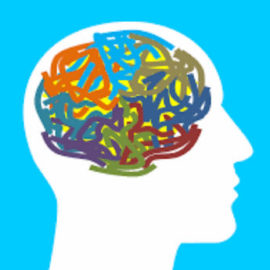

This article is an excerpt from the Shortform book guide to "When Things Fall Apart" by Pema Chödrön. Shortform has the world's best summaries and analyses of books you should be reading.
Like this article? Sign up for a free trial here.
What does maitri mean? Why does Pema Chödrön recommend practicing compassion for yourself and others?
According to When Things Fall Apart by Pema Chödrön, maitri is Sanskrit for “loving-kindness.” This kindness doesn’t just extend to other people, though. You should also be kind to yourself when times are challenging.
Let’s look at how you can practice self-compassion and kindness to others.
Cultivate Compassion For Yourself and Others
One of the most powerful ways to stay afloat during difficult times and transform your pain into a positive force is to cultivate compassion for yourself and others. In Tibetan Buddhism, the path of cultivating compassion for yourself is called maitri, which translates from Sanskrit to loving-kindness. By practicing maitri, Pema Chödrön says you can make friends with yourself—trust and lean on yourself—and feel more connection to and belonging with others.
(Shortform note: Maitri is one of four key qualities, The Four Sublime States (or Brahmavihāra in Sanskrit), cultivated in Buddhist meditation. The other three qualities are compassion (Karuna), the practice of wishing to relieve the suffering of all beings, empathetic joy (Mudita), the practice of rejoicing in the happiness and success of others, and equanimity (Upekkha), the practice of developing a balanced and impartial state of mind toward all beings. According to Buddhist teachings, this set of practices can help you develop a more peaceful and harmonious relationship with the world around you.)
Self-Compassion
The first step in learning Maitri is to develop compassion for yourself. For many people, it’s easier to feel loving-kindness toward others—they instead feel hostility, hatred, and shame toward themselves. But Chödrön asserts that it’s never too late to start practicing self-compassion and become your own friend.
(Shortform note: In Radical Acceptance, Tara Brach discusses the power of compassion and defines it as “to feel with.” She further explains that feeling with yourself—acknowledging your suffering with loving-kindness—is difficult for many people because they don’t feel they deserve care and compassion. Fortunately, feelings of unworthiness are among the painful emotions that radical acceptance and self-compassion can heal.)
Not to be confused with self-improvement or building confidence, self-compassion is about learning to accept yourself unconditionally, not fixing or changing yourself. The first step toward self-compassion is understanding that your thoughts, emotions, and memories are all impermanent and not representations of who you really are. You can think of yourself as the sky and your thoughts, emotions, and memories as different kinds of weather passing through—we don’t look up and think the clouds are the sky. We understand that the sky is much bigger than all the weather it holds. In the same way, you are much more than the emotions and thoughts you experience, and remembering this can help you be more patient and kind to yourself.
(Shortform note: Acceptance and Commitment Therapy (ACT) is a widely used, evidence-based counseling approach that can teach people that our thoughts, emotions, and memories are not who we are. In The Happiness Trap, Russ Harris explains that in ACT, we separate ourselves from our thoughts and emotions in a process called defusion. Through defusion, we learn to observe and distance ourselves from unhelpful thoughts, beliefs, and emotions rather than getting entangled in them or trying to suppress them. ACT has been shown to help people develop a more flexible and mindful relationship with their internal experiences, which can lead to greater psychological well-being and a more fulfilling life.)
When you encounter instability, uncertainty, and fear in your life, self-compassion and mindfulness can help you slow down and experience your feelings with kindness and care. Chödrön teaches that it’s important to be kind to yourself during difficult times because this helps you develop a trusting relationship with yourself that you can lean on. Additionally, when you develop self-compassion, you’ll be able to have compassion for others and you’ll discover that you are just one small part of a greater whole.
| A Practice for Self-Compassion Although Chödrön presents meditation and mindfulness as tools to cultivate self-compassion, Tara Brach teaches an additional useful practice called RAIN, which can help you develop loving-kindness for yourself. An acronym that outlines each step of the process, RAIN can and should be practiced whenever and wherever you find yourself overwhelmed with harsh thoughts toward yourself or any painful emotion. Brach recommends pausing, placing a hand on your heart, and doing the following: R: Recognize and name the emotion or feeling you’re having. A: Allow and accept how you feel without judgment. I: Investigate what your feelings may be trying to tell you or what might be causing them. N: Nurture yourself with a kind thought like, “I care about this pain, and I am here for you.” |
Compassion for Others
When we suffer, we can get stuck in only caring about protecting ourselves, which leads to isolation and more suffering. But if we can connect our struggles and pain to the struggles and pain of others, we can transform negative experiences into an experience of open-hearted connection and kinship with all life on this planet. Chödrön explains that, when our suffering is at its peak, if we deliberately try to feel tenderness for the suffering of other living beings, we can break through our self-absorbed isolation. In this way, compassion can heal us.
(Shortform note: Tara Brach also touches on the common experience of feeling isolated and absorbed in our own concerns when we are suffering and adds an explanation for why this happens. She says when we suffer and are engrossed in our pain, we start to see everyone else as a separate “other.” We do this because painful experiences make us feel unsafe, and it’s our hardwired biological response to look for safety in those most familiar and similar to us while rejecting everyone else. We invent imaginary differences between ourselves and others, labeling them and putting them into boxes, which, in turn, shuts down our ability to feel compassion for their suffering.)
Chödrön teaches that the most powerful way to experience peace and joy is to connect with others in mutual suffering and pain. You can do this through a meditative practice called Tonglen, which means “giving and taking.” In Tonglen, your personal suffering can become a path to compassion.
To practice Tonglen, breathe in and imagine you’re inhaling the suffering of others. Then, breathe out the wish that all beings experience freedom from suffering. You can also practice this by noticing and naming the negative feeling you’re having as you breathe in and breathe out compassion for everyone who’s currently experiencing the same emotion or feeling. For example, if you feel lonely, first acknowledge the feeling to yourself and as you inhale and imagine breathing in the feeling of loneliness. Then as you exhale, breathe out kind and loving thoughts to everyone in the world who also feels lonely at that moment.
(Shortform note: Practicing Tonglen is one way to tap into the compassion for others that Chödrön describes, and Tara Brach offers several other practices to open your heart. She says one useful way of cultivating compassion for others (and ourselves) is simply asking, “What do they need?” Being curious and open to other people’s needs can dissolve feelings of isolation and help you be more loving toward others. You can also practice imagining yourself in other people’s situations to feel how it might feel to be in their situations, which is the essence of compassion. These techniques may be more straightforward ways of being compassionate if the visualization in Tonglen doesn’t work for you.)

———End of Preview———
Like what you just read? Read the rest of the world's best book summary and analysis of Pema Chödrön's "When Things Fall Apart" at Shortform.
Here's what you'll find in our full When Things Fall Apart summary:
- How to find courage and compassion amid pain, loss, and uncertainty
- How to use pain and suffering to grow and transform your life
- Buddhist methods for easing suffering and finding inner peace






